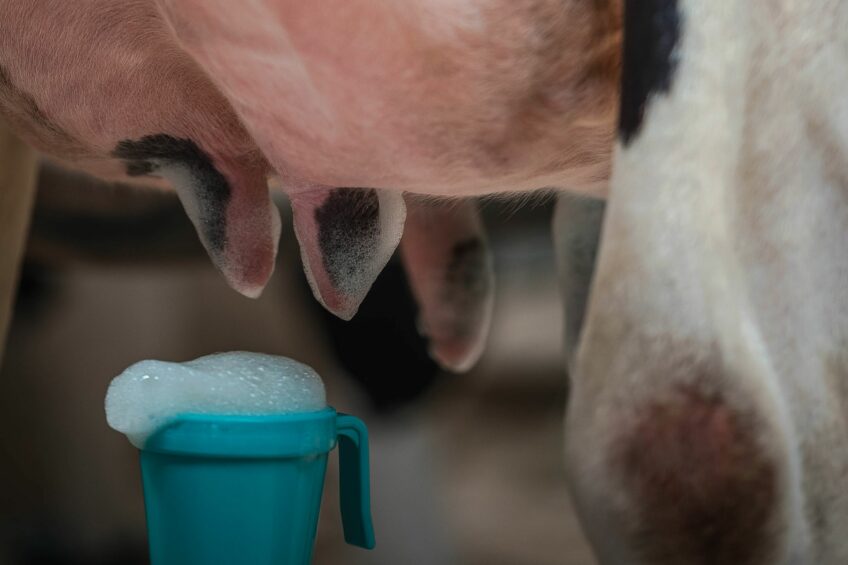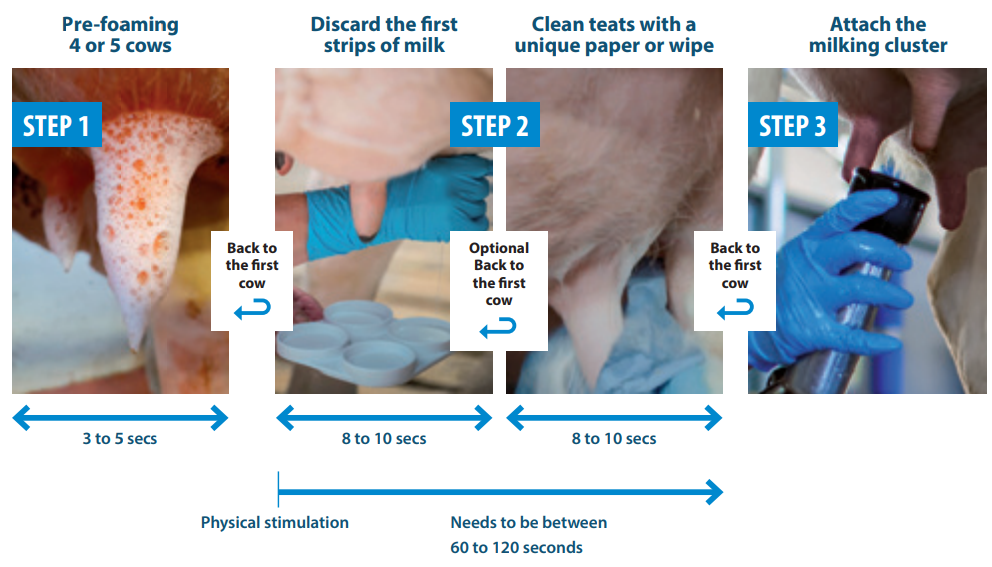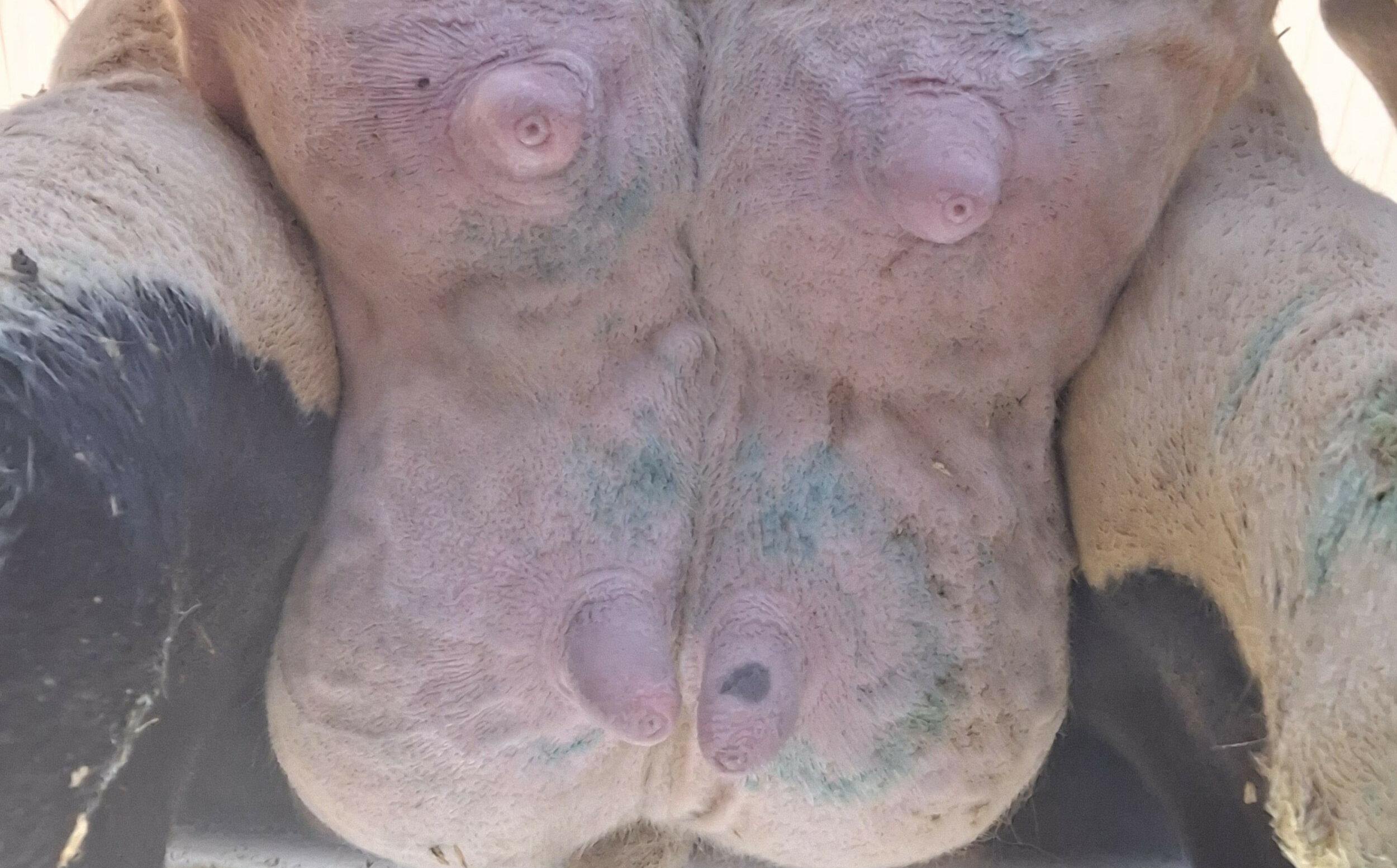Best practices and benefits of a pre-milking routine

A successful milking process begins long before the milking cluster is attached. The pre-milking routine is a critical yet often overlooked step in maintaining udder health, improving milk quality, ensuring animal welfare, and maximising milk yield.
Understanding milk harvesting
Before milking, less than 20% of the milk yielded by dairy cows is stored within the gland cistern where it is immediately available for removal. The majority of the milk is stored in the milk alveoli and requires oxytocin release for milk ejection. Oxytocin, produced in the hypothalamus and released by the posterior pituitary gland in the brain, is triggered by tactile stimulation of the teats. This hormone causes contractions of the muscles surrounding the milk alveoli, forcing the milk into the ducts toward the teat.
Elevated plasma concentrations of oxytocin are detected within 15-20 seconds after the start of tactile stimulation, and alveolar milk reaches the cistern at about 40-50 seconds. The average lag time between the initiation of tactile stimulation and the release of milk in the cistern is approximately 60 seconds. Stress experienced by the cow before or during milking can reduce oxytocin release and delay milk ejection, regardless of the pre-milking routine conducted.
The proper pre-milking sequence
One of the most recommended milking preparation routines comprises 4 steps: sanitise (dip or foam), strip, dry, and attach. This process should take between 60 and 120 seconds from the initial tactile stimulation to cluster attachment. This period, known as the ‘prep-lag time’, allows for the release of oxytocin and the contraction of the muscles around the milk alveoli, facilitating milk letdown (Figure 1).

Teat cleaning and disinfection: Thorough teat cleaning and disinfection using methods such as pre-dipping or pre-foaming are essential. This step removes visible dirt, manure, and bacteria from the teat skin, significantly reducing the risk of bacteria entering the teat canal during milking and causing new udder infections. Recent research shows that cleaning the teats with a lactic acid foam appeared to be more effective in reducing the high bacterial load of Streptococcus spp. and Staphylococcus spp. on the teat skin compared to wiping alone, especially when a contact time of 30 seconds was maintained (Figure 2).

Forestripping: Forestripping involves manually compressing the first streams of milk from each quarter during teat preparation. Despite some producers stopping this practice due to time constraints and infection risks, forestripping has several undeniable benefits. It removes high cell count milk, detects abnormal milk early, and stimulates oxytocin release for efficient milking. Proper hand disinfection can mitigate the risk of transmitting germs.
Wiping: Wiping the teats during preparation removes visible dirt and stimulates oxytocin release. However, wiping alone may not provide sufficient stimulation compared to forestripping. Proper cleaning followed by drying with a single-use cloth significantly lowers the number of bacteria on the teat surface, minimising the chance of those bacteria entering the teat canal during milking.
Benefits of a proper pre-milking routine
Happy cows: Proper stimulation and milking techniques reduce stress and pain, improving cow comfort and health. In case of an improper pre-milking routine, milk drains quickly from the teats, creating an air space between the teat and the liner, exposing the teats to high vacuum levels. Prolonged exposure to high vacuum can cause poor blood circulation, swelling, and constriction of the teat canal, reducing milk flow and causing discomfort and pain to the cow.
Higher profits: Efficient milk ejection and reduced milking time increase profitability. Delayed milk ejection reduces profitability as it leads to longer milking times and increased residual milk in the udder. Research shows that cows with poor milk letdown can have up to 30% residual milk compared to 10% in cows with normal milk letdown.

Healthy udders: Proper routines will go a long way to minimise the risk of udder infections and teat tissue damage. Delayed milk ejection increases the likelihood of machine milking-induced changes in teat tissue, such as red-blue discoloration and open teat orifices. These changes are correlated with higher rates of teat canal colonisation, increased risk of new udder infections, as well as elevated cell counts.
In conclusion, a well-established pre-milking routine is essential for maintaining udder health, improving milk quality, and maximising milk yield. By following the recommended steps and understanding the importance of each, dairy producers can ensure their cows are udder healthy, their milk is of high quality, and their operations are profitable.
*References are available on request


